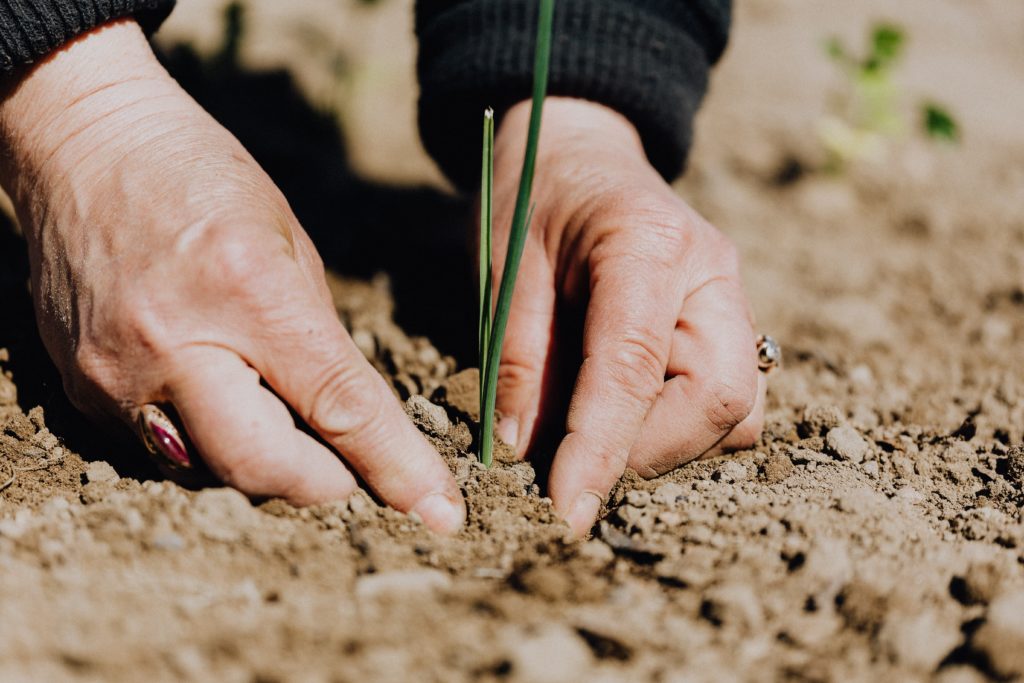
Plastic, plastic everywhere…
Environmental impact can be viewed on a spectrum, with some materials having extremely negative consequences. On the other end are some seemingly utopian materials that claim to have zero impact (but don’t just take the manufacturer’s word for it). Between these two extremes you’ll find a lot of grey area. You may realize you can’t entirely avoid using problematic materials, like plastic, which is so ubiquitous. But you can analyze these materials’ presence in your life – what, where and why – and make significant adjustments.
I started my own personal journey in recent years to reduce plastic. Rather than making it feel like a herculean task, my goal has been to have fun with it. I seek opportunities to reduce its dominance in my life. Framing it as a fun goal rather than a deprivation or inconvenience makes it easier to remain committed. If you’re familiar with the concept of “toward energy” versus “away energy” you may know what I mean. An example of toward energy would be exercising because it makes you feel good. On the other hand, exercising because you have a negative self image, and want to fix your perceived flaws, would qualify as away energy (as in “away from where I am now”).
How do you begin to reduce?

Many of us already strive to lower our use of things like plastic bags (and many municipalities have banned their use to some extent). There may also be times when you want to buy a product, but find the excessive packaging to be a turnoff. This could lead you to decide against the purchase. In this case, you’re voting with your dollars, which is incredibly powerful. Cooking at home versus ordering takeout is another common way to cut back on waste. Needles to say, conducting a renovation is much more involved than these examples, and will lead to situations where certain types of waste are unavoidable. I would still argue that keeping these ideals in mind as you move forward will result in some improved sustainability in your project.
Plastic Free by Beth Terry is an excellent source on the subject of reducing plastic in your life. It is a practice that takes time to incorporate, but will gradually yield results. My intention is that the more I learn, the more I can incorporate this knowledge into my design practice and encourage my clients to do the same.
Existing in the grey area between “good” and “bad”
Not all “bad” materials are created equally. In the push for greener options, there are so-called bioplastics which include some products not synthesized from fossil fuel sources. However, these too come with their own challenges. There are sectors of industry trying to change manufacturing processes and products. Though they may not solve everything, they still reduce negative environmental effects enough for you to consider them as a viable alternative.

Other environmental considerations will include your choice of energy sources. Radiant heating, geothermal heating or solar panels are all options worth researching, especially if you’re building a house from scratch. Also worth examination is your use of gas versus electric stoves. Most of us prefer the convenience of gas, but it is a fossil fuel, and therefore nonrenewable. With light fixtures there is some debate about the most efficient, greenest, and healthiest (for us) light sources, so you may want to research before you commit. The types of faucets, toilets, and shower heads you use will significantly impact your water consumption. A lot is dictated by code, but it’s nice to have an awareness, so that, given options, you can make an informed choice.

Eliminating your impact completely is virtually impossible, and so it can feel too overwhelming to even try. But a moderate approach to materials and practices can mean significant improvements. As consumers, we can decrease our use of problematic materials, and strike a balance between the convenience of our modern life, and what’s good for the planet long term.
RELATED POSTS
As an Amazon Associate, this site may contains affiliate links and I can earn from qualifying purchases at no cost to you. View disclosure for more information.
I'm Claudia. Welcome to my Interior Design blog! I'm thrilled to share my expertise and passion with you. With over 20 years in the industry, I'm a Certified Interior Designer, holding an NCIDQ Certification, and an educator. Interior Design isn't just my career—it's my passion. Dive in to explore more about me. Click here to learn more!
Hi Friend!
Stay inspired—join our design community by subscribing to the blog today.
subscribe now
Other Posts You Might Like
©2025 Claudia Giselle Design | Interior Designer | Brooklyn, New York
Legal
BACK TO TOP
Testimonials
718-255-5949
Press
office@claudiagiselle.com
MENU
We create thoughtful, personalized interiors for those who value quality and beauty in every detail — serving NYC, Manhattan, Brooklyn, Long Island, the Hamptons, and the Hudson Valley (including Westchester and Dutchess County) & Beyond.
Timeless Classicism with a
Bold Touch of Elegance
Home
Services
Process
About
Blog
Portfolio
Scheudule a Consultation
GET IN TOUCH
Contact





